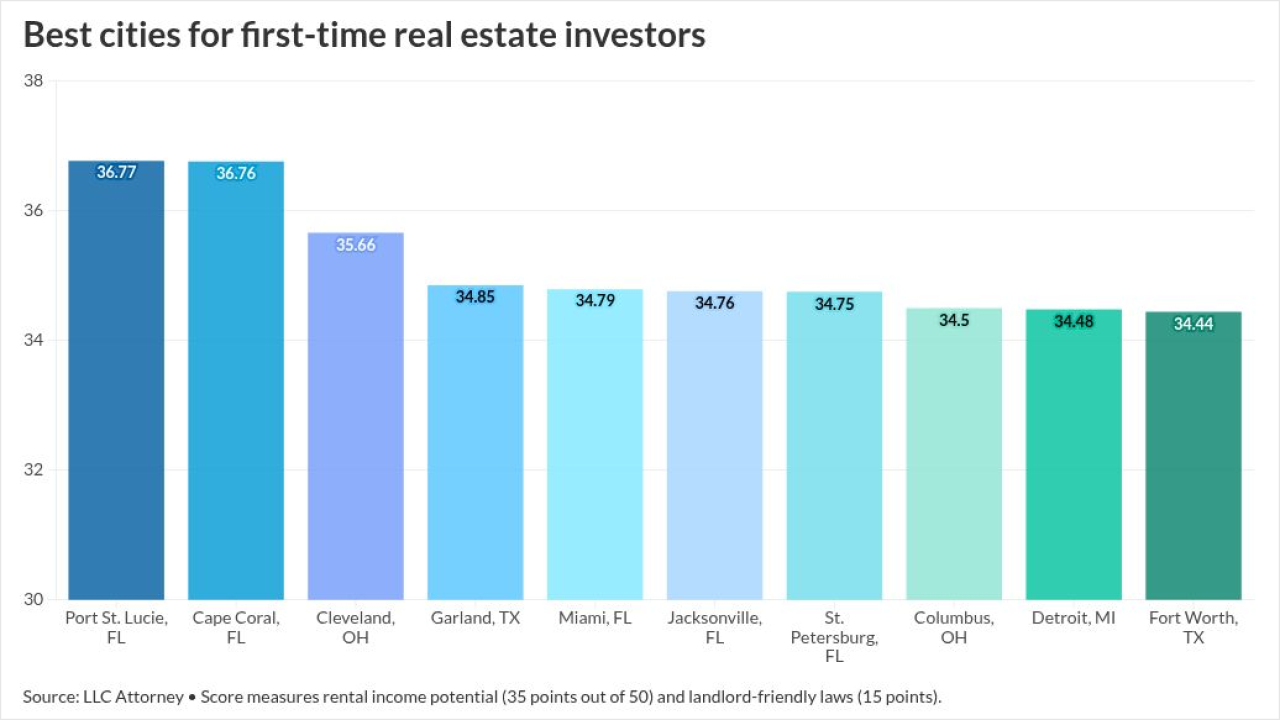Want unlimited access to top ideas and insights?
Popular TV shows about house fixers and flippers have sparked consumer interest in remodeling, creating an opportunity for lenders to build a specialty in renovation loans while traditional mortgage lending is weak.
Renovation refinancing offers lenders a great fallback plan as mortgage originations shrink and
The rising popularity of HGTV remodeling shows could be a big contributor. Programs like "Fixer Upper," "Love It or List It" and "Property Brothers" averaged a combined weekly viewership over 8.6 million in 2017 and 2018, up from 5.8 million in 2014, according to Nielsen.

"HGTV highlights renovation in every single episode they do, in ways people never thought were possible. They use the words 'renovation budget' in every single episode," said Vincent Nepolitan, national renovation sales manager at Planet Home Lending. "They're making people think, 'Hey, how do I do this? What can I do to change and remodel my home?' But you have to understand the business and the program to see the value in what HGTV is doing."
Even shows like "Fixer Upper," which ended its original run in 2018, often live on for much longer in reruns and on video streaming services. And the more Chip and Joanna Gaines enter people's living rooms, the more likely they are to seek out remodeling projects in their homes. The shows are certainly good conversation pieces for lenders who want to promote the renovation loan, which is an all-in-one transaction allowing homeowners to use the equity in their homes without taking out a second-lien mortgage. But the product is largely unknown and requires some consumer education.
Television personality Ty Pennington, best known for "Extreme Makeover: Home Edition," has been a pitchman for Guaranteed Rate since 2013. The Chicago-based nonbank mortgage lender has used him in numerous ad campaigns that appear during home renovation shows.
"That's a way we brand within our brand to the renovation side of things," said Tim Floyd, renovation manager at Guaranteed Rate. "Who doesn't want to own their dream home? That's why these shows are so popular. I think that's the power of having Ty as one of our spokesmen. He's a good personality, he has his own show, but most importantly, people want to read about how they can remodel their own home and transform it."
However, a lack of knowledge is mostly what holds back this loan type from taking off.
"Renovation refinancing is underutilized because there aren't a lot of consumers who know what you can do with renovation loans," said Floyd. "Overall, I think it's going to continue to increase to one of its bigger years, just based on the lack of inventory available and the age of housing. It's just a matter of the information getting to the consumers."
Renovation refinance is considered rate-and-term, allowing the highest combined-loan-to-value ratios. Cash-outs permit a maximum CLTV of 85% based on existing property value. Renovation loans use after-completion value and — depending on the program — bump the CLTV to 95% or 97.5%.
The loan is especially advantageous for homeowners without a lot of equity, particularly buyers who purchased a house in the last year with Federal Housing Administration financing or with a lower down payment. The renovation loan's use of as-completed value gives the borrower more opportunity to make needed improvements without the pain of pulling cash out.
"There are a lot of myths out there that the refi market is dead and dried up and the rate environment is making things harder," Nepolitan said. "Look into the programs and the options out there. What people don't realize about the renovation loan is the scope of financing. FHA, conventional, VA — it doesn’t matter what program it is, they all have a renovation channel."
Price could be an obstacle in some cases.
"Renovation loans typically have higher pricing in general compared to nonrenovation counterparts," Floyd said. "The rates are higher because companies need to have their own internal draw departments. The costs of these loans are higher than traditional loans, but the value you receive from them is more than worth it."

A spike upward in renovation refinancing could help lenders avoid having to
"This will help the
The appetite for remodeling is expected to remain strong. "There are two reasons for that.
Generation X is the second group that would also be doing remodeling. "Say Gen Xers maybe have kids in junior high or high school and would like to move up. But there simply isn’t inventory, and it's expensive if they're in an urban center and in a school district they like. They simply say, 'We own the land, we own the first floor, why don't we tear the roof off and build a second floor?' That way they aren’t dislocating the family," Duncan continued.
The boomer generation is also one of the reasons that existing home supply is at 30-year lows relative to demographics. Despite


